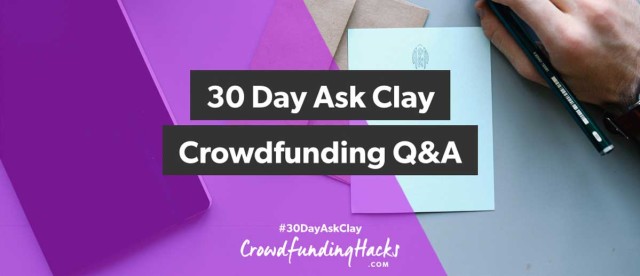This is the fifth post in our 30 Day Ask Clay Crowdfunding Q&A.
I’m answering a new question every day in June.
Submit your question by going to CrowdfundingHacks.com/AskClay, where you can see all of the questions and all of my answers.
Full Transcript
Hey everyone…this is Clay Hebert from CrowdfundingHacks.com…and today’s question is…
How did crowdfunding come out of nowhere? What changed?
I know it seemed like the concept of crowdfunding is pretty new and these platforms like Kickstarter and Indiegogo seemed to come out of nowhere over the last few years.
But the concept of crowdfunding is actually far from new.
Way back In 1713, Alexander Pope set out to translate over 15,000 lines of ancient Greek poetry into English. It took him over five years to get it right, but it was worth the wait: a translation of Homer’s Iliad that still exists. In exchange for a shout-out in the acknowledgements, an early edition of the book, and the delight of helping to bring a new creative work into the world, 750 subscribers pledged two gold guineas to support the job before Pope ever put pen to page. Yes, in 1713, Alexander Pope crowdfunded his translation.
70 years later, in 1783, Mozart wanted to perform three recently composed piano concertos in a Viennese concert hall, so he published an invitation offering manuscripts to those who pledged. Mozart’s first campaign actually failed, but a year later he tried again, and 176 backers pledged enough to bring his concertos to life. He thanked them in the concertos’ manuscript.
And in 1885, the the Statue of Liberty had no pedestal on which to stand in New York Harbor. France had given us the statue and the United States was just responsible for building the pedestal, at a cost of $100,000. But nobody wanted to fund the project… until Joseph Pulitzer (who would create the Pulitzer prize in his will), used his newspaper, The World, to launch a unique crowdfunding campaign to build the pedestal, save the project and keep the Statue of Liberty in New York City.
So we know the concept of crowdfunding isn’t new. So what’s changed?
Well, what’s changed is that the internet that connects us all. We don’t live in an industrial economy anymore, we live in a connection economy. You want proof?
Uber, the world’s largest taxi company, owns no vehicles.
Facebook, the world’s most popular media owner, creates no content.
Alibaba, the most valuable retailer, has no inventory.
And Airbnb, the world’s largest accommodation provider, owns no real estate.
Like no technology in history, the internet allows us to find and connect with each other.
If you’re Lee Miller and you want to make a new kind of device that allows you to play with your cat when you’re not home, you can find not just cat owners, but cat owners that love design and have some disposable income.
If you’re Satya Tweena and want to save New York City’s last hat factory, you can find the people that care about that and want to buy a hat to help you save that.
If you’re BSX Athletics and want to build the first ever wearable lactate threshold sensor, you can find the super serious athletes who care about tracking that.
The connection power of the internet, that’s available to all of us, is something Alexander Pope, Mozart and Joseph Pulitzer could only dream of.
The internet connects us all and makes the crowdfunding model exponentially more dynamic and accessible.
Sometimes what seems new is actually very old.
As always, you can submit your question or see all of the crowdfunding questions and my answers at http://crowdfundinghacks.com/AskClay
End Transcript
